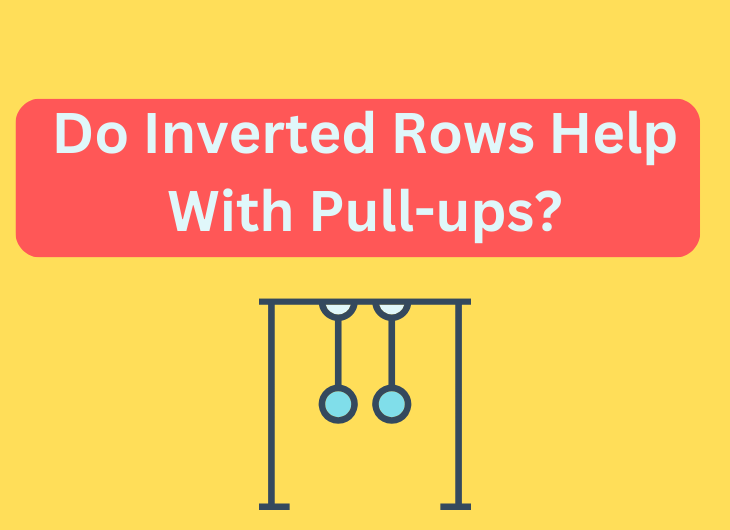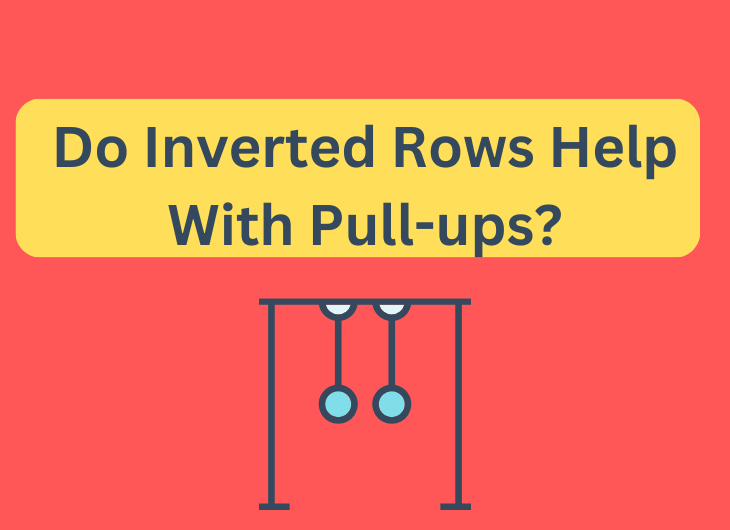Do Inverted Rows Help With Pull-ups?
Pull-ups are a quintessential exercise for building upper body strength and enhancing overall fitness. However, they can be challenging for many individuals due to the significant amount of upper body strength required to execute them correctly. This is where inverted rows come into play. Inverted rows are seen as a valuable exercise that can aid in building the necessary strength to eventually conquer pull-ups. This blog aims to explore the relationship between inverted rows and pull-ups and assess whether inverted rows can indeed be an effective stepping stone toward mastering the pull-up.
What Are Pull-ups and Inverted Rows?
Pull-ups are a bodyweight exercise where an individual hangs from a bar and pulls themselves up until their chin is at or above the bar. It primarily targets the back muscles, specifically the latissimus dorsi, as well as the biceps and forearms.
On the other hand, inverted rows involve hanging under a bar, similar to the position at the bottom of a pull-up, and pulling the chest up to the bar. This movement primarily engages the same muscle groups as pull-ups but in a slightly different manner.
Benefits of Pull-ups
Pull-ups offer a plethora of benefits, making them a coveted exercise in strength training routines. The key advantages include:
- Upper Body Strength: Pull-ups are renowned for developing formidable upper body strength. They target various muscle groups, including the back, arms, and shoulders, leading to well-rounded strength gains.
- Muscle Development: Pull-ups are highly effective for muscle development, promoting growth in the back, biceps, and forearms. This promotes a sculpted, muscular physique.
- Functional Fitness: Pull-ups mimic movements encountered in daily life, enhancing functional fitness. They are vital for activities like climbing, lifting, and pushing/pulling motions.
Challenges of Performing Pull-ups
Pull-ups present several challenges, especially for beginners or those lacking upper body strength. Common hurdles include:
- Lack of Strength: Pull-ups require a significant amount of upper body strength, making them difficult for individuals with limited muscle power.
- Body Weight: Pull-ups are harder for individuals with a higher body weight, as they have to lift a greater load.
- Access to Equipment: Some people may lack access to a suitable pull-up bar, limiting their ability to perform this exercise.
How Do Inverted Rows Help With Pull-ups?
Inverted rows serve as an effective preparatory exercise for mastering pull-ups. Here’s how they can help:
- Builds Upper Body Strength: Inverted rows engage the same muscle groups as pull-ups but in a less intense manner, allowing individuals to gradually build strength.
- Adjustable Difficulty: The difficulty of inverted rows can be easily adjusted by changing the angle or height, making them suitable for various fitness levels.
- Improves Pulling Technique: Inverted rows help individuals perfect their pulling technique, an essential skill for executing a proper pull-up.
Muscles Engaged in Inverted Rows
Inverted rows predominantly engage the following muscle groups:
- Back Muscles (Latissimus Dorsi): The primary muscle worked during inverted rows, similar to pull-ups, is the latissimus dorsi, which contributes to the pulling motion.
- Biceps: Inverted rows also engage the biceps, aiding in the pulling action required for both exercises.
- Forearms: Gripping the bar during inverted rows activates the forearms, improving grip strength, a crucial aspect of pull-ups.
Inverted Rows vs. Assisted Pull-up Machine
Both inverted rows and the assisted pull-up machine can aid in building the strength necessary for pull-ups. However, there are key differences:
- Muscle Activation: Inverted rows engage a wider range of stabilizing muscles due to the need to control the body while pulling, offering a more holistic approach to muscle engagement.
- Functional Movement: Inverted rows mimic the body position in a pull-up more closely, making the transition to pull-ups smoother.
- Accessibility: Inverted rows can be performed with minimal equipment, making them more accessible than the assisted pull-up machine, which may not be available in all gyms or home setups.
How to Properly Perform Inverted Rows
To perform inverted rows effectively:
- Set the Bar: Position a sturdy bar at waist height, ensuring it can support your weight.
- Grasp the Bar: Grip the bar slightly wider than shoulder-width apart, with an overhand or neutral grip.
- Body Position: Walk your feet forward, lean back, and keep your body straight, forming a diagonal line from head to heels.
- Pull Up: Pull your chest up to the bar in a controlled manner, then lower yourself back down.
Designing a Workout Routine
To incorporate inverted rows into a workout routine for improving pull-up ability:
- Warm-up: Begin with a dynamic warm-up to prepare the muscles for exercise.
- Inverted Rows: Perform 3 sets of inverted rows, aiming for 8-12 repetitions per set.
- Additional Exercises: Supplement with other upper body exercises like push-ups, bicep curls, and shoulder presses.
- Cooldown: Finish with stretching exercises to enhance flexibility and reduce muscle tension.
Real-life Success Stories
Jessica, a fitness enthusiast, struggled with pull-ups initially due to her limited upper body strength. She incorporated inverted rows into her routine and noticed a significant improvement in her pulling strength. After consistent practice, she successfully achieved her first unassisted pull-up.
Tips and Common Mistakes
Tips:
- Consistency is Key: Regularly incorporate inverted rows into your routine to see progress.
- Gradually Increase Difficulty: As you gain strength, elevate your feet or extend your legs to make the exercise more challenging.
Common Mistakes:
- Improper Form: Arching the back or using momentum diminishes the effectiveness of the exercise.
- Not Controlling the Descent: Lower yourself down in a controlled manner to maximize muscle engagement.
Frequently Asked Questions
1. Can inverted rows really help me perform pull-ups if I struggle with them?
Absolutely. Inverted rows engage similar muscle groups as pull-ups but in a more manageable way, making them an excellent exercise to build the necessary strength. Over time, consistent practice with inverted rows can significantly enhance your ability to perform pull-ups.
2. How often should I incorporate inverted rows into my workout routine to see progress?
For optimal results, aim to include inverted rows in your routine 2-3 times per week. Consistency is key, so gradually increase the difficulty and volume to continually challenge your muscles and progress toward mastering pull-ups.
3. What if I don’t have access to a pull-up bar? Can I still benefit from inverted rows?
Absolutely. Inverted rows can be performed using a sturdy table, Smith machine, or even gymnastics rings attached to a secure anchor. Adapt the exercise to your available equipment, and you’ll still reap the benefits of building upper body strength.
4. I’ve been doing inverted rows for a while, but I haven’t seen much improvement in my pull-up ability. What might be the issue?
Progression is key. If you’ve plateaued, consider adjusting the difficulty by elevating your feet, using a narrower grip, or incorporating isometric holds at the top of the row. Additionally, ensure you’re maintaining a consistent workout schedule and following a well-rounded strength training routine.
5. Can inverted rows cause any injuries or strains if done incorrectly?
Like any exercise, improper form in inverted rows can lead to injuries. It’s crucial to maintain a straight body, avoid excessive arching or swinging, and control the movement throughout. Start with a suitable difficulty level and gradually progress to prevent strains or injuries.
6. Are there any variations of inverted rows I can try to make the exercise more challenging?
Certainly. You can experiment with single-arm inverted rows, feet elevated inverted rows, or even use a weighted vest to increase resistance. These variations intensify the exercise, providing a greater challenge for your muscles and aiding in strength development.
7. How long does it typically take to progress from inverted rows to perform a full pull-up?
The time it takes varies for each individual based on factors like starting strength, consistency, and overall fitness level. With consistent training, individuals often notice improvements in their pull-up ability within a few months to a year. Patience and dedication are essential for the journey.
Conclusion: Do Inverted Rows Help With Pull-ups?
Inverted rows can indeed aid in the journey towards mastering pull-ups by building essential upper body strength and refining the pulling technique. While they may not fully replicate the intensity of a pull-up, they serve as a valuable stepping stone and an effective exercise in their own right. Incorporate inverted rows into your fitness routine, stay consistent, and with time and effort, you’ll be on your way to conquering the pull-up and achieving your fitness goals. Remember, progress takes time and dedication, so keep pushing yourself and enjoy the journey to a stronger you.
Visit the link to read more: https://family-fitness-fun.com/how-to-do-push-ups-for-upper-chest/





